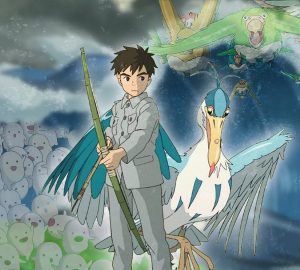Why does the film industry practice whitewashing?

One of this year’s most anticipated films, “Ghost in the Shell,” the remake of the classic 1995 anime film of the same name, has been out in theaters for nearly a week now with some mixed reactions. While there have been criticisms over the film’s lack of engaging plot elements and certain pacing issues, one particular gripe has been made against the film since it was announced. Scarlett Johansson, a white actress, was cast as the film’s main character, who was originally Japanese. Fans and critics have been furious with the casting choice, accusing the film of whitewashing. Whitewashing is a term used to refer to the entertainment industry’s attempt to make certain films more appealing by casting white people in roles that should go to other races or ethnicities given the setting or source material. There is no question that this practice is wrong, but at the same time, learning the history of the issue and why filmmakers had to make these decisions is a better way of understanding the topic.
Unfortunately, whitewashing is not a new practice in the entertainment industry. America has not had the best track record when it comes to accepting minority groups and our media ultimately reflected that. During the early days of cinema and throughout much of the early 20th century, seeing people in black or yellow-face was not uncommon. What made this even worse was that when actual actors of these ethnicities worked in entertainment, they were ignored in one way or another. Actors such as Hattie McDaniel, the first African American to receive an Oscar, and Bill Robinson, the most highly paid African American entertainer of the first half of the 20th century, were restricted from attending the premieres of many of their films, especially in the South. However, as time would go on we became more accepting of different people and our entertainment began to do the same. People of different races and ethnicities began to thrive in the world of entertainment as writers, directors, producers and actors. However, prejudice in our entertainment never truly went away.
As a matter of fact, one of the most prevalent sources of whitewashing in most modern day entertainment is animation. American animated films such as “Beauty and the Beast” (1991), “Aladdin” (1992), “The Hunchback of Notre Dame” (1996), and “Kubo and the Two Strings” (2016) utilize this practice. Many foreign animated works have done this as well, such as Studio Ghibli films. This doesn’t even include the vast number of voice actors who portray different gender identities, ages, and other demographics they are not a part of.
In some cases, however, we may actually accept whitewashing and not even realize it. Some films are even praised for it. “The Magnificent Seven” (1960) features an entire cast of white people, despite being based on the 1954 Japanese film, “Seven Samurai.” Similarly, a live-action film adaptation of the popular Japanese anime, “Cowboy Bebop” was in the works in 2008 and was planned to star Keanu Reeves, a white actor, and fans were actually excited.
In fact, a study done in Japan found that a majority of the everyday citizens interviewed didn’t mind that Johansson was playing the main character in the “Ghost in the Shell” remake. Many of them realized that being an American film, they would likely cast someone from America and as long as she did a good job as an actress, it would be alright.
This still poses the question, is it alright to make these casting choices? That depends on which side you’re looking at. From a pure ethical standpoint, filmmakers should be pushing more to find actors who properly represent these characters and there is no excuse not to do this. America is a massive melting pot of different cultures and there is no shortage of entertainers of different ethnicities living in this country. Yet at the same time, looking from the business standpoint of film-making, there are surprising reasons as to why these decisions are made.
One example of this is Marvel’s “Doctor Strange” (2016). In the film, Tilda Swinton, a British actress, portrayed The Ancient One who, in the comics, was always a man of Tibetan heritage. Director Scott Derrickson originally wanted an Asian actor, but was afraid of creating a stereotype by having an Asian play a Fu Manchu type of character. So, he decided to go with Swinton because she could take the character in a new direction.
It is interesting to see in cases like this, how filmmakers make choices to stay away from stereotyping. In many ways, that is why we are ok with whitewashing at times, even if we don’t realize it. We are beginning to accept people who, in the past, would have never gotten these roles because they are ultimately bringing something new to the table. From Jamie Foxx as a gun-slinging black cowboy in “Django Unchained” (2012), to Josh Gad playing a homosexual LeFou in “Beauty and the Beast” (2017), the majority of us are accepting these portrayals in our media because it is nice to see something new. However, when traditional whitewashing is practiced, we react negatively because it is reminding us of the past. The filmmakers behind the new “Ghost in the Shell” are likely not trying to push any sort of bias towards their audience. These people don’t want bad press to accompany their film and likely tried to exercise all their options before ultimately choosing Johansson. This doesn’t change the fact that it is wrong, as are most cases of whitewashing. But at least understanding why this decision was made can help you be more informed as a viewer.
It is important to know that these decisions aren’t always made for the reasons you might think. Similarly, it is important to know that there has likely been a time when whitewashing was present, but you still accepted it. There is no doubt, however, that the world will begin to accept more diversity and our entertainment will reflect that change.





















